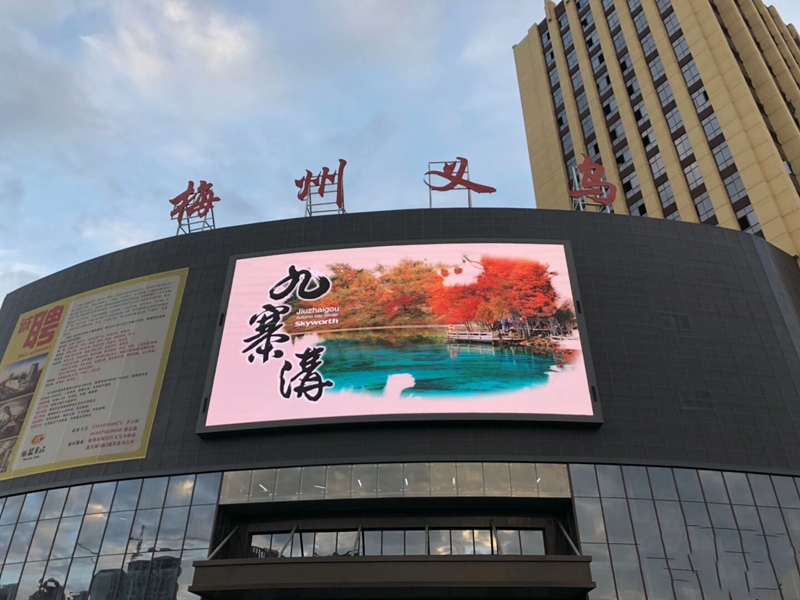In high temperature summer, the outdoor working environment for full color LED display screens is very harsh. In addition, LED display screens themselves generate a lot of heat during operation. If the LED display screens have poor heat dissipation, it is likely to cause the integrated circuit of the LED display screen to work improperly, or even be burned out, thereby making the display system unable to work properly.
In addition, there is a significant difference in the expansion coefficient between LED chips and our commonly used metal thermal conductivity and heat dissipation materials. Therefore, LED chips cannot be directly soldered to prevent high and low temperature thermal stress from damaging the chips of LED full color displays.

The heat dissipation of the full color LED display wall lamp housing varies depending on the power level and usage location. Proper heat dissipation treatment of the full color LED display screen can improve the service life and performance of the LED display screen.
Here are eight commonly used methods for cooling full-color LED displays:
1. Aerohydrodynamics utilizes the shape of the lamp housing to create convective air, which is the lowest cost way to enhance heat dissipation.
2. Thermal conductive plastic shell, filled with thermal conductive material during injection molding, increases the thermal conductivity and heat dissipation capacity of the plastic shell.
3. Aluminum fins, which are the most common heat dissipation method, are used as a part of the shell to increase the heat dissipation area.
4. Surface radiation heat dissipation treatment: The surface of the lamp shell is subjected to radiation heat dissipation treatment, which is simply achieved by applying radiation heat dissipation paint, which can radiate heat away from the surface of the lamp shell.
5. Heat transfer tube is used for heat dissipation, which uses heat transfer tube technology to transfer heat from the full color LED display screen chip to the shell heat dissipation fins. Large lighting fixtures, such as street lamps, are common designs.
6. Fan heat dissipation, using a long-life and high-efficiency fan inside the lamp housing to enhance heat dissipation, this method is low-cost and effective. However, replacing a fan is troublesome and not suitable for outdoor use, as this design is relatively rare.
7. Liquid bulb packaging technology is used to fill transparent liquid with high thermal conductivity into the bulb of the lamp body. This is currently the only technology that utilizes LED chips to conduct heat and dissipate heat on the emitting surface, in addition to the principle of reflection.
8. Integration of thermal conductivity and heat dissipation – The use of high thermal conductivity ceramics for lamp shell heat dissipation aims to reduce the working temperature of full color LED display screen chips
Only by effectively transmitting heat can full-color LED displays be protected from climate and environmental erosion. The issue of LED display screen heat dissipation is an important aspect that LED display screen manufacturers must face and deal with, and should not be careless.
